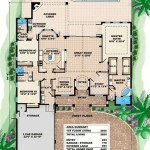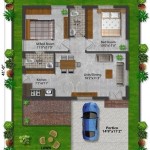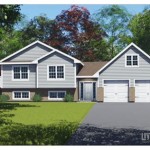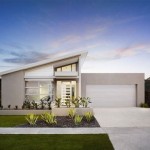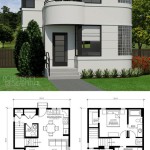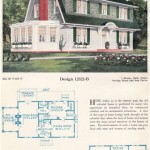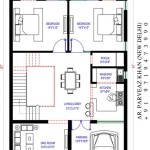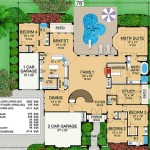Simple Small Ranch House Plans
Small ranch house plans offer a blend of practicality, affordability, and timeless appeal. Their single-story layout eliminates stairs, making them ideal for aging in place or individuals with mobility concerns. Ranch homes often feature open floor plans, maximizing space and promoting a sense of community. Their simple rectangular or L-shaped footprints contribute to cost-effective construction and maintenance. This article will explore the benefits and various design considerations for simple small ranch house plans.
Benefits of Small Ranch House Plans
Small ranch house plans offer several advantages, making them a popular choice for homeowners. Their compact design minimizes wasted space and reduces energy consumption. The absence of stairs enhances accessibility and simplifies daily living. Ranch homes often feature large windows, taking advantage of natural light and offering seamless connections to outdoor spaces. Their straightforward construction often translates to quicker build times and lower overall costs compared to multi-story homes. Moreover, their adaptable design readily accommodates future expansions or modifications.
Key Design Considerations for Small Ranch House Plans
Designing a small ranch house requires careful consideration of several key elements. Determining the ideal square footage is crucial for balancing functionality and affordability. The layout should prioritize efficient use of space and create a natural flow between living areas. Selecting appropriate building materials impacts both the home's aesthetic and its long-term maintenance requirements. Incorporating energy-efficient features, such as proper insulation and high-performance windows, contributes to lower utility bills and a smaller environmental footprint. Finally, maximizing storage solutions is essential in a smaller home to maintain a clutter-free and organized environment.
Open Floor Plan Concepts
Open floor plans are a hallmark of many modern ranch homes. They seamlessly connect the kitchen, dining, and living areas, creating a spacious and communal atmosphere. This design promotes interaction and facilitates entertaining. Open floor plans also enhance natural light penetration and ventilation throughout the home. However, careful consideration of furniture placement and traffic flow is essential to maintain a sense of organization within an open concept. Strategic use of area rugs, lighting fixtures, and varying ceiling heights can help define distinct zones within the open space without compromising its airy feel.
Exterior Design Options
The exterior design of a small ranch house can vary significantly, depending on personal preferences and regional architectural styles. Traditional ranch homes often feature low-pitched roofs, large overhanging eaves, and simple, unadorned facades. More contemporary designs may incorporate elements like mixed materials, geometric shapes, and larger windows. Landscaping plays a vital role in enhancing the curb appeal of a ranch home, whether through simple foundation plantings or more elaborate gardens. Outdoor living spaces, such as patios or decks, extend the usable living area and provide opportunities for relaxation and entertainment.
Maximizing Space in a Small Ranch House
Several strategies can maximize space utilization in a small ranch home. Built-in storage solutions, such as bookshelves, window seats with storage compartments, and under-stair storage (if a split-level design is chosen), can effectively utilize otherwise wasted space. Multi-functional furniture, like sofa beds or ottomans with hidden storage, offers flexibility and conserves space. Vertical storage solutions, such as tall cabinets and shelving units, maximize wall space. Selecting lighter paint colors and strategically placed mirrors can create an illusion of spaciousness. Finally, decluttering and organizing regularly are essential for maintaining a comfortable and functional living environment.
Budgeting and Cost Considerations
Building a small ranch house can be more budget-friendly than constructing a larger, multi-story home. However, careful budgeting and planning are still essential. Construction costs vary significantly depending on factors like location, materials, and labor rates. Working with a reputable builder and obtaining multiple bids can help ensure competitive pricing. Exploring pre-fabricated or modular home options can potentially reduce construction time and costs. Making informed decisions about finishes and fixtures can also significantly impact the overall budget. Finally, factoring in landscaping and other exterior improvements into the budget is crucial for completing the project within financial constraints.
Incorporating Accessibility Features
Ranch homes are inherently well-suited for accessibility modifications. Their single-story design eliminates the need for stairs, a significant benefit for individuals with mobility challenges. Wider doorways and hallways can accommodate wheelchairs and other mobility devices. Installing grab bars in bathrooms and other strategic locations enhances safety and independence. Lowering countertops and sinks improves accessibility in the kitchen and bathroom. Lever-style door handles and faucets are easier to operate for individuals with limited hand strength or dexterity. Finally, incorporating features like ramps and zero-threshold showers can further enhance accessibility and create a comfortable and inclusive living environment.
House Plan Of The Week Simple Ranch With 3 Bedrooms Builder

Floor Plan Design Small House Plans

24x42 Ranch Floor Simple House Plans Open Custom Home
Ranch Home Plan 3 Bedrms 1 Baths 912 Sq Ft 157 1055

Ranch Style With 3 Bed 2 Bath Car Garage House Plan Plans

High Resolution Small Ranch Style House Plans 1 Floor Country Plan

Simple Affordable Ranch Home Design Style House Plans Designs

Simple Ranch House Plan For Economical Construction Costs Craftsman Plans Small Rambler

Simple Ranch House Plans And Small Modern

Plan 80523 2 Bedroom Small House With 988 Square Feet

